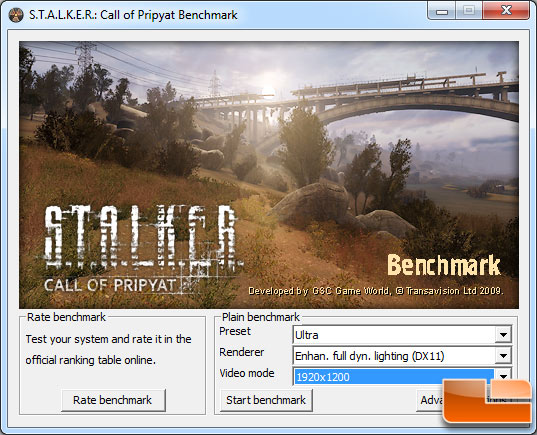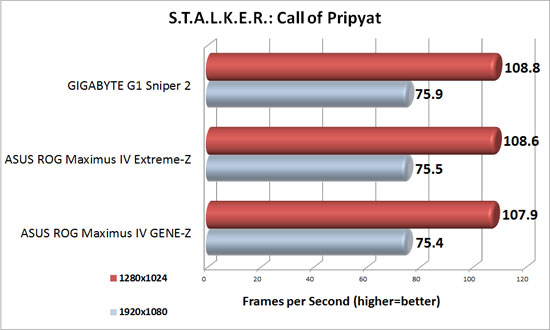GIGABYTE G1.SNIPER2 Intel Z68 Motherboard Review
S.T.A.L.K.E.R.: Call of Pripyat

The events of S.T.A.L.K.E.R.: Call of Pripyat unfold shortly after the end of S.T.A.L.K.E.R.: Shadow of Chernobyl following the ending in which Strelok destroys the C-Consciousness. Having discovered the open path to the Zone’s center, the government decides to stage a large-scale operation to take control of the Chernobyl nuclear plant.
S.T.A.L.K.E.R.: Call of Pripyat utilizes the XRAY 1.6 Engine, allowing advanced modern graphical features through the use of DirectX 11 to be fully integrated; one outstanding feature being the inclusion of real-time GPU tessellation. Regions and maps feature photo realistic scenes of the region it is made to represent. There is also extensive support for older versions of DirectX, meaning that Call of Pripyat is also compatible with older DirectX 8, 9, 10 and 10.1 graphics cards.

The game S.T.A.L.K.E.R.: Call of Pripyat has no internal benchmarking tools built into the game engine, but they do have a standalone benchmark available that we used for our testing purposes. The screen capture above shows the main window of the benchmark with our settings. Notice we are running Enhanced Full Dynamic Lighting “DX11” as our renderer.

Benchmark Results: In S.T.A.L.K.E.R.: Call of Pripyat we once again see that there is very little performance difference between our boards. The GIGABYTE G1 Sniper 2 however, does show off a slight lead once again. At the resolution of 1280×1024 the Sniper 2 averaged 108.8 frames per second while the ASUS Maximus IV Extreme-Z averaged 108.6 and the Maximus IV Gene-Z averaged 107.9. Firing up the S.T.A.L.K.E.R.:Call of Pripyat benchmark at 1920×1080 the GIGABYTE G1 Sniper 2 averaged 75.9 frames per second while the Extreme-Z averaged 75.5 frames per second and the Gene-Z averaged 75.4.

Comments are closed.